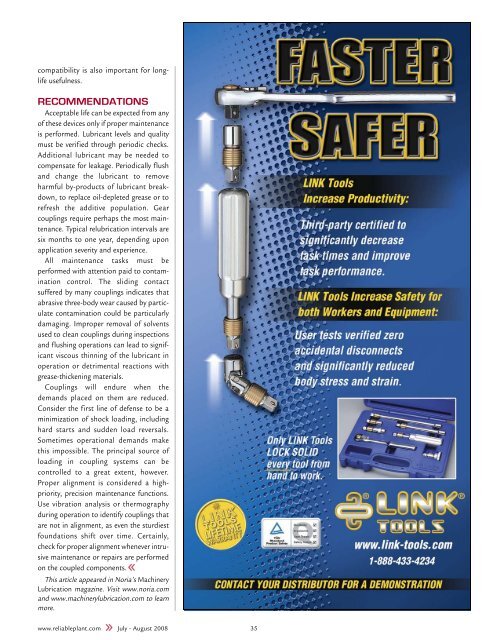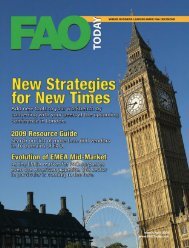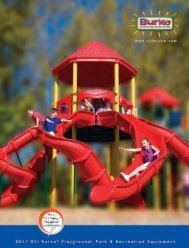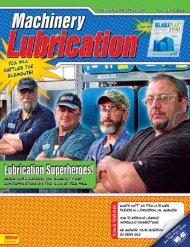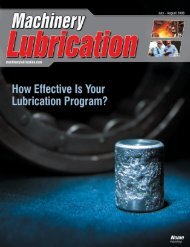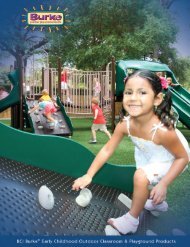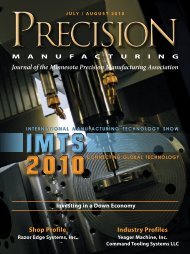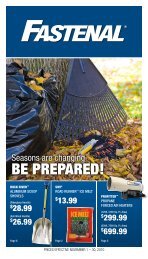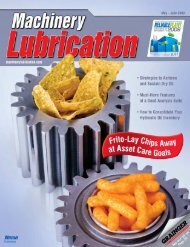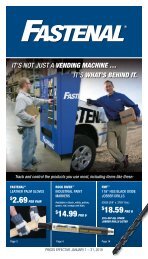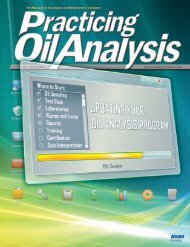Reliable Plant July August 2008
Reliable Plant July August 2008
Reliable Plant July August 2008
Create successful ePaper yourself
Turn your PDF publications into a flip-book with our unique Google optimized e-Paper software.
compatibility is also important for longlife<br />
usefulness.<br />
RECOMMENDATIONS<br />
Acceptable life can be expected from any<br />
of these devices only if proper maintenance<br />
is performed. Lubricant levels and quality<br />
must be verified through periodic checks.<br />
Additional lubricant may be needed to<br />
compensate for leakage. Periodically flush<br />
and change the lubricant to remove<br />
harmful by-products of lubricant breakdown,<br />
to replace oil-depleted grease or to<br />
refresh the additive population. Gear<br />
couplings require perhaps the most maintenance.<br />
Typical relubrication intervals are<br />
six months to one year, depending upon<br />
application severity and experience.<br />
All maintenance tasks must be<br />
performed with attention paid to contamination<br />
control. The sliding contact<br />
suffered by many couplings indicates that<br />
abrasive three-body wear caused by particulate<br />
contamination could be particularly<br />
damaging. Improper removal of solvents<br />
used to clean couplings during inspections<br />
and flushing operations can lead to significant<br />
viscous thinning of the lubricant in<br />
operation or detrimental reactions with<br />
grease-thickening materials.<br />
Couplings will endure when the<br />
demands placed on them are reduced.<br />
Consider the first line of defense to be a<br />
minimization of shock loading, including<br />
hard starts and sudden load reversals.<br />
Sometimes operational demands make<br />
this impossible. The principal source of<br />
loading in coupling systems can be<br />
controlled to a great extent, however.<br />
Proper alignment is considered a highpriority,<br />
precision maintenance functions.<br />
Use vibration analysis or thermography<br />
during operation to identify couplings that<br />
are not in alignment, as even the sturdiest<br />
foundations shift over time. Certainly,<br />
check for proper alignment whenever intrusive<br />
maintenance or repairs are performed<br />
on the coupled components.<br />
This article appeared in Noria’s Machinery<br />
Lubrication magazine. Visit www.noria.com<br />
and www.machinerylubrication.com to learn<br />
more.<br />
www.reliableplant.com <strong>July</strong> - <strong>August</strong> <strong>2008</strong> 35


